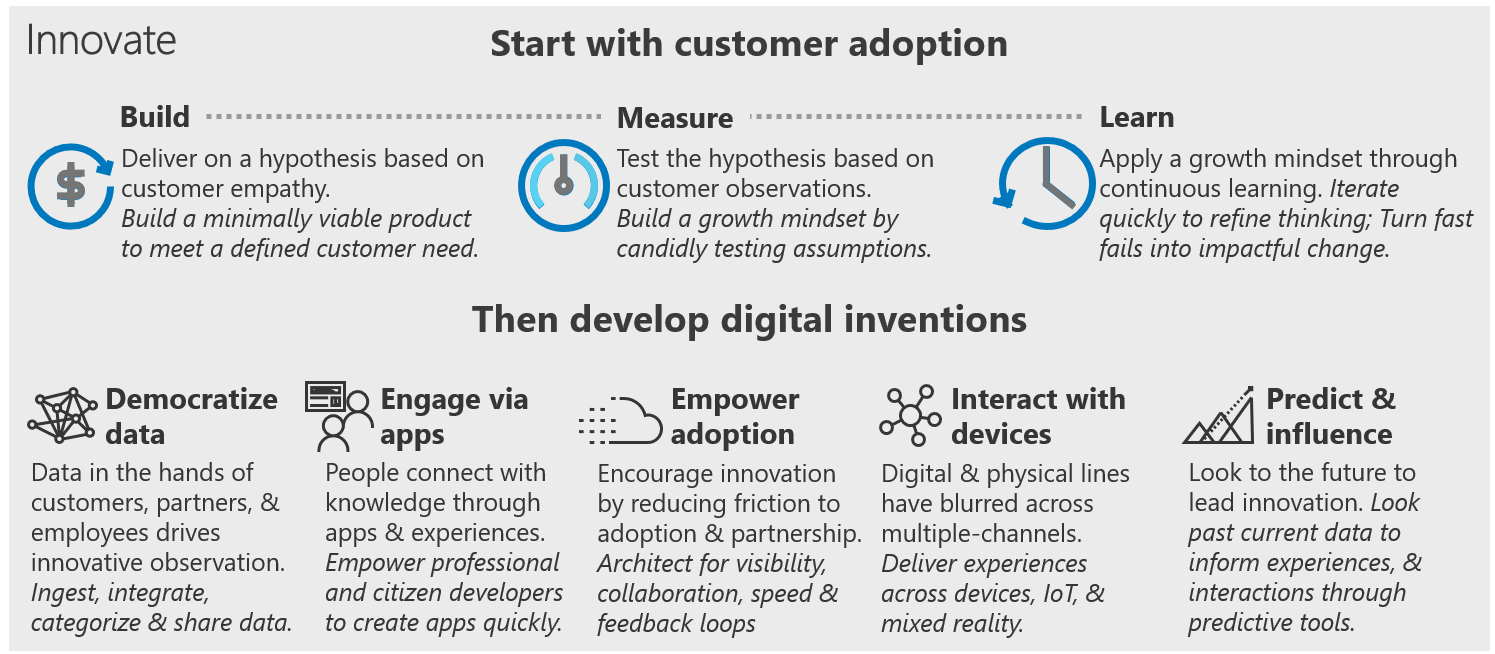Develop digital inventions
What are digital inventions? As described in Innovation in the digital economy, innovation requires a balance between invention and adoption. Digital inventions are the products of technological innovation that solve customer's needs and provide innovative solutions. Customer feedback and partnership are required to drive adoption, preferably using the build-measure-learn feedback loop. For more information, see Create customer partnerships through the build-measure-learn feedback loop.
The types of innovation and disciplines described in the next section introduce a series of approaches to developing digital inventions while keeping adoption and customer empathy in mind. Each discipline is briefly described, along with links to each process.

Summary of each discipline of digital invention
There are different types of innovation for product development. Not every discipline is required to drive innovation for each specific case. By following the guidance in Build with customer empathy, you'll test a hypothesis in every iteration. Defining the output of each iteration as a minimum viable product (MVP) should enable you to create innovation with the smallest number of disciplines.
- Democratize data: By getting data into the hands of customers, partners, and employees, you encourage innovative observation. Ingest, centralize, govern, and share data.
- Engage via applications: People connect with knowledge through applications and experiences. Empower professional and citizen developers to create applications quickly.
- Empower adoption: Encourage innovation by reducing friction to adoption and partnership. Architect for visibility, collaboration, speed, and feedback loops.
- Interact with devices: Digital and physical lines have blurred across multiple-channels. Deliver experiences across devices, IoT, and mixed reality.
- Predict and influence: Look to the future to lead innovation. Look past current data to inform experiences and interactions through predictive tools.
Next steps
Democratization of data is the first discipline of innovation to consider and evaluate.
Feedback
Coming soon: Throughout 2024 we will be phasing out GitHub Issues as the feedback mechanism for content and replacing it with a new feedback system. For more information see: https://aka.ms/ContentUserFeedback.
Submit and view feedback for